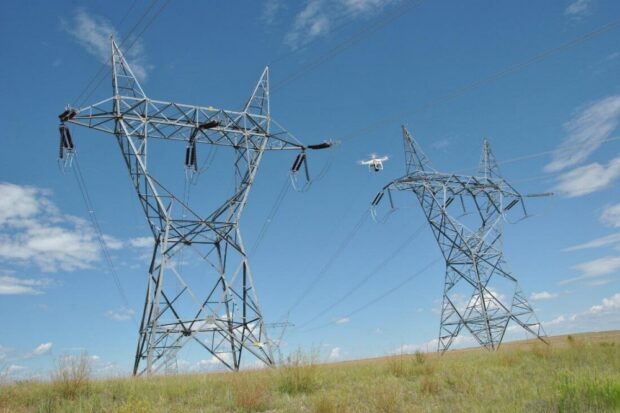A team of researchers, led by Associate Professor Satoshi Suzuki from the Graduate School of Engineering at Chiba University in Japan, has developed an innovative low-cost UAV for inspecting transmission lines. In contrast to the expensive components used in other methods, this approach utilizes a global navigation satellite system (GNSS) receiver, RGB camera, and a millimeter (mm) wave radar.
Dr. Suzuki emphasizes:
“Our proposed system enables small drones to inspect transmission lines at close range for the first time. This innovation can lead to the automati on of power facility inspections, promoting a more sustainable power supply.”
Using specialized algorithms, it addresses the limitations of affordable equipment, facilitating close-range inspections. The proposed system paves the way for the widespread adoption of automated inspection systems.
The proposed system utilizes sensors to characterize transmission lines and implements a knowledge-based line identification system, which employs a specialized technique called Hough transform to identify and measure the distance of transmission lines from the UAV, enabling it to fly in close proximity. Additionally, a heading correction module counters magnetic field interference affecting the UAV’s compass, calculating the desired direction based on the identified transmission line’s start and end points, and correcting the UAV accordingly.
Furthermore, a waypoint correction system addresses the mismatch between the planned and actual path of the UAV caused by the low accuracy of the GNSS receiver. An auxiliary controller is also employed to address unknown disturbances during inspection, such as strong winds, which can deviate the UAV from the planned path.
The team tested their designed UAV to inspect a 10 kV energized transmission line. Their experiments demonstrated that the proposed method effectively addressed magnetic interference problems as well as mismatches between the planned and actual path, and resisted wind interference. Nevertheless, the team acknowledged that the proposed method has room for further improvement, suggesting that more advanced control algorithms could enhance wind resistance.
“By addressing the challenge of remote inspections, this method can ensure an uninterrupted electricity supply, contributing to the sustainable development goal of ensuring access to clean and affordable energy. Moreover, this method also holds the potential for carrying out automated maintenance work,” highlights Dr. Suzuki.
In conclusion, the development of this novel low-cost UAV platform represents a significant stride toward automated inspection of transmission lines, ensuring regular monitoring and reducing manual effort.
Their findings were published in Volume 15, Issue 19 of the journal Remote Sensing on October 06, 2023.
About Associate Professor Satoshi Suzuki
Satoshi Suzuki is currently an Associate Professor at the Graduate School of Engineering, Chiba University in Japan. He received the 36th Academic Journal Paper Award from the Robotics Society of Japan in 2022. His research focuses on manufacturing technology, including mechanical, electrical/electronic, and chemical manufacturing, as well as control systems engineering. He has published around 100 research articles, which have been cited over 150 times.
Funding:
This research received no external funding.
Reference:
Title of original paper: Close-Range Transmission Line Inspection Method for Low-Cost UAV: Design and Implementation
Authors: Qi Wang1, Wei Wang2, Ziran Li1, Akio Namiki1, and Satoshi Suzuki1
Affiliations: 1Graduate School of Science and Engineering, Chiba University
2Jiangsu Collaborative Innovation Center of Atmospheric Environment and Equipment Technology (CICAEET), Nanjing University of Information Science & Technology
Journal: Remote Sensing
DOI: https://doi.org/10.3390/rs15194841
Source: Press Release

